Start Your First Project
Launch the Software
TIP
This tutorial assumes you downloaded the zip package and are running the bundled executable (an .exe file on Windows). If you want to build the software from source, please refer to the corresponding instructions in the reference.
To launch the software, double-click ParrotPPT.exe:
![]()
After double-clicking, a terminal window will pop up—this means the program is starting. Once it's successfully launched, you’ll see something like this:

Do not close the terminal. ParrotPPT runs in your browser. Typically, your browser will open the correct page automatically. If not, copy the URL displayed in the terminal (e.g., http://localhost:8501 in the screenshot above) and paste it into your browser.
Once you’re in, you’ll see the following interface:
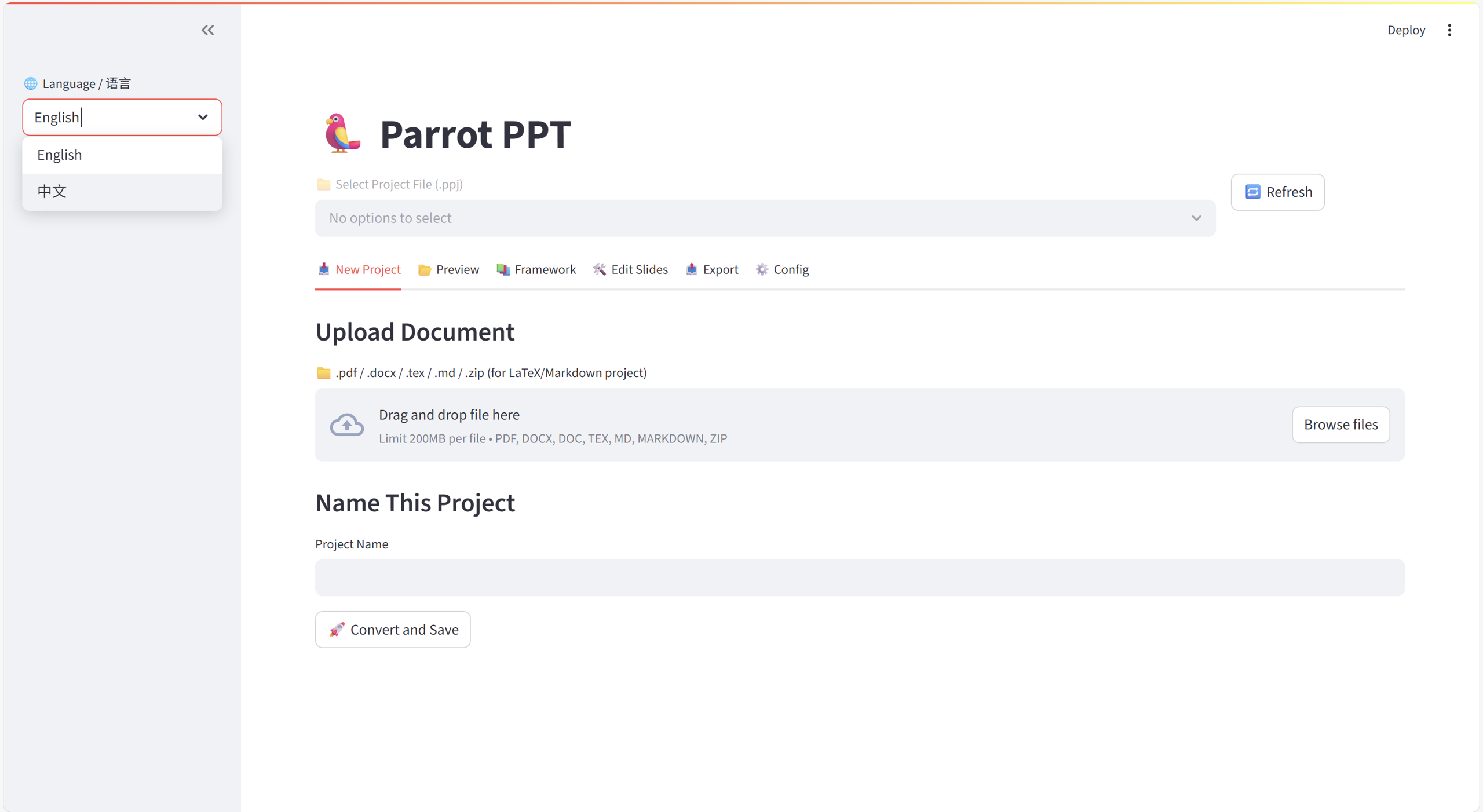
You're now ready to start building your slide!
Verify LLM Configuration
ParrotPPT does not provide built-in LLM services; you’ll need to configure one yourself. Go to the Settings tab and fill in your LLM base URL, API key, and model name. For example, if you're using DeepSeek, first register an account on the DeepSeek platform, then refer to their API docs to get your base URL and model name, and obtain your token (typically starts with sk) from your API keys page. The deepseek-v3 model is inexpensive and fully sufficient for our needs.
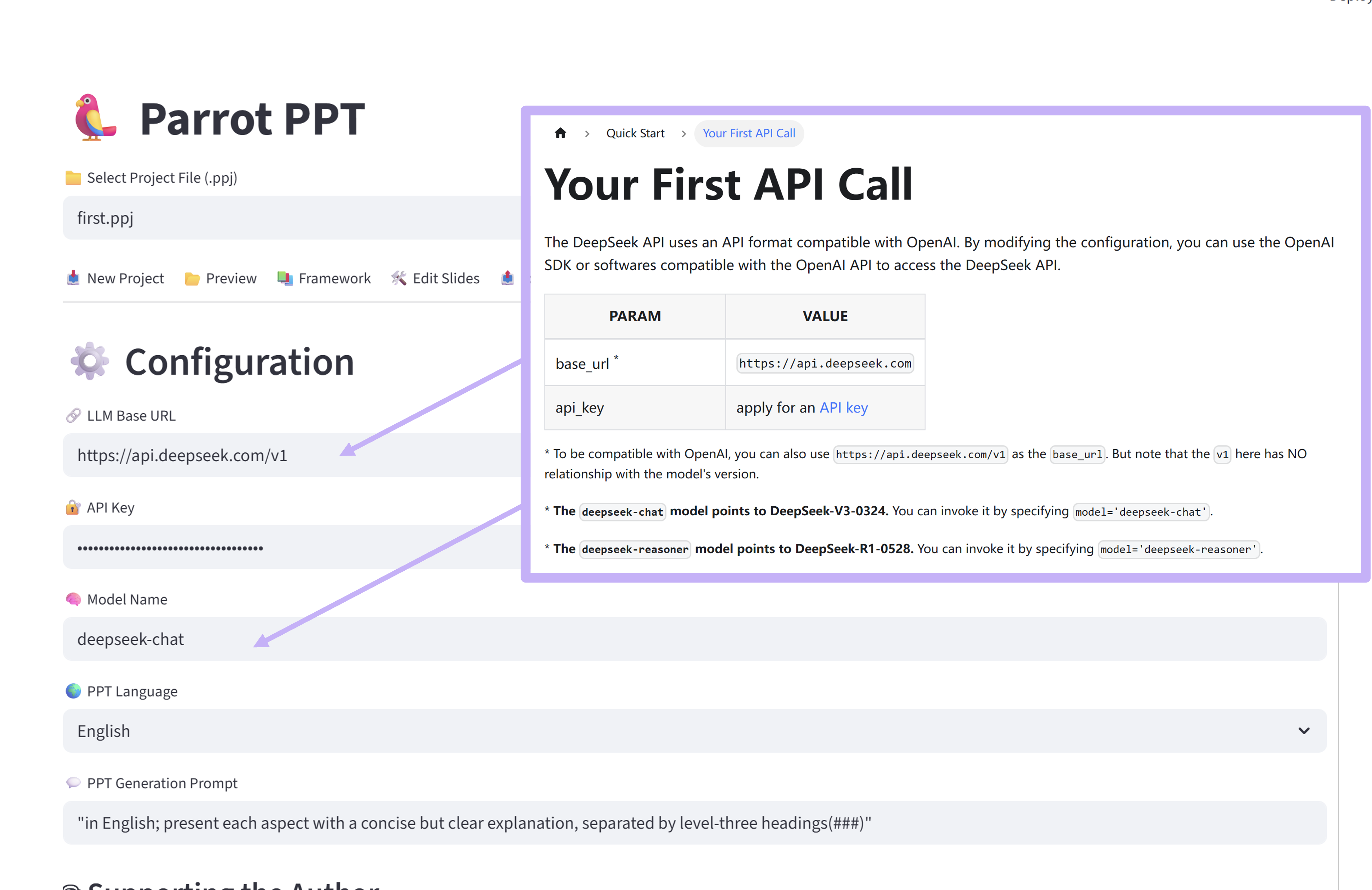
Scroll down in the settings page to find the debug console, where you can test if your model is working properly. If the model replies normally, you're all set!
Create a Project
First, choose the document you want to base your slide on. Supported formats include PDF, Word, Markdown, and LaTeX (.tex). If your source is Markdown or LaTeX and includes images, please upload a .zip file and select the main file after upload.
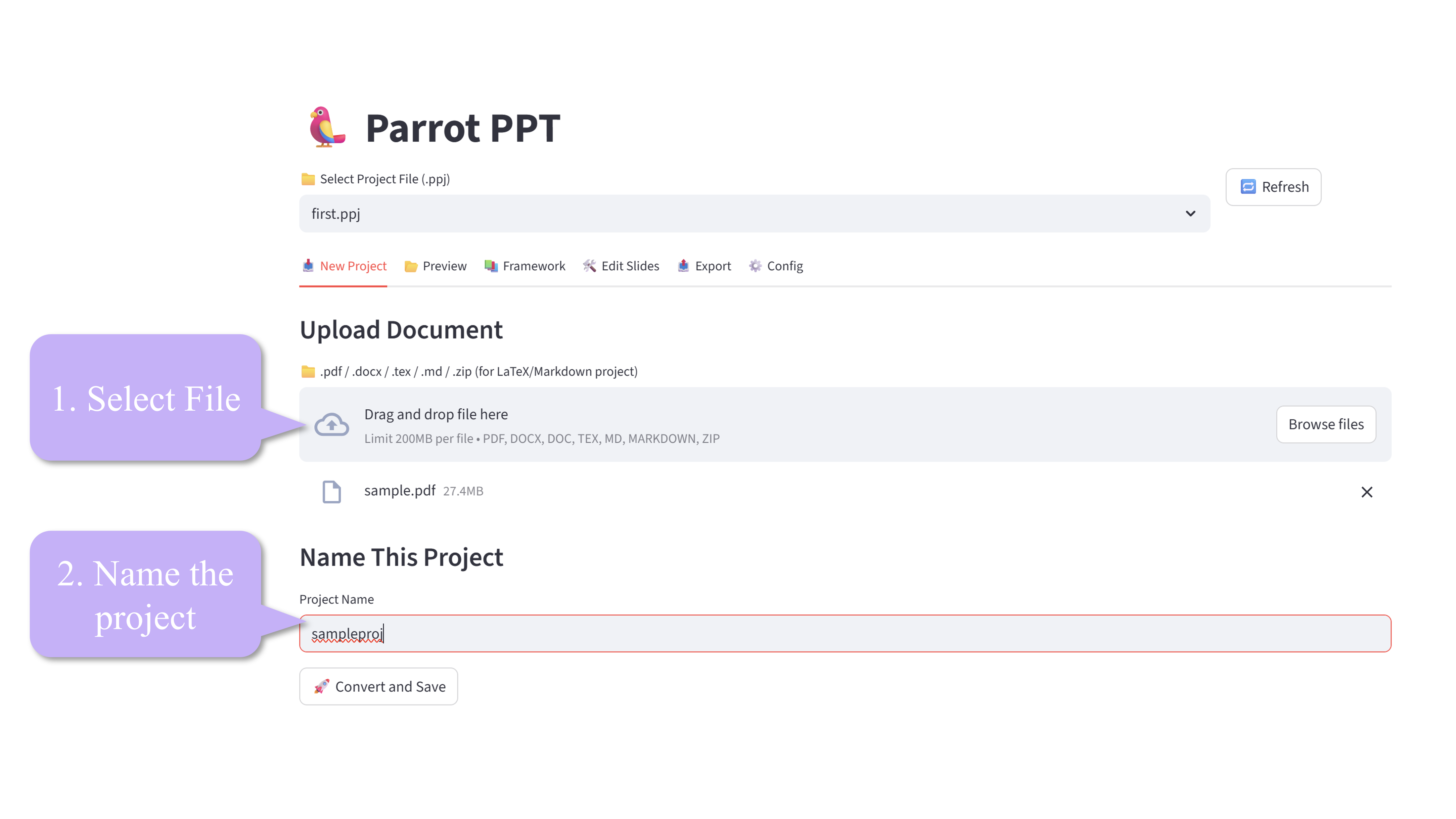
When you see the .ppj file creation success message, your project has been created.
Generate Framework
Next, let ParrotPPT analyze your article and draft the rough outline of your slides. First, click "Let the LLM understand the article" to save the article’s structure. Once this is complete, you can enter your requirements in the text box, then click "Generate Slide Framework". The draft slide outline will appear below.
You don’t need to aim for perfection at this stage—if the overall structure looks good, you can move to the next step. Otherwise, regenerate the outline until you're satisfied.
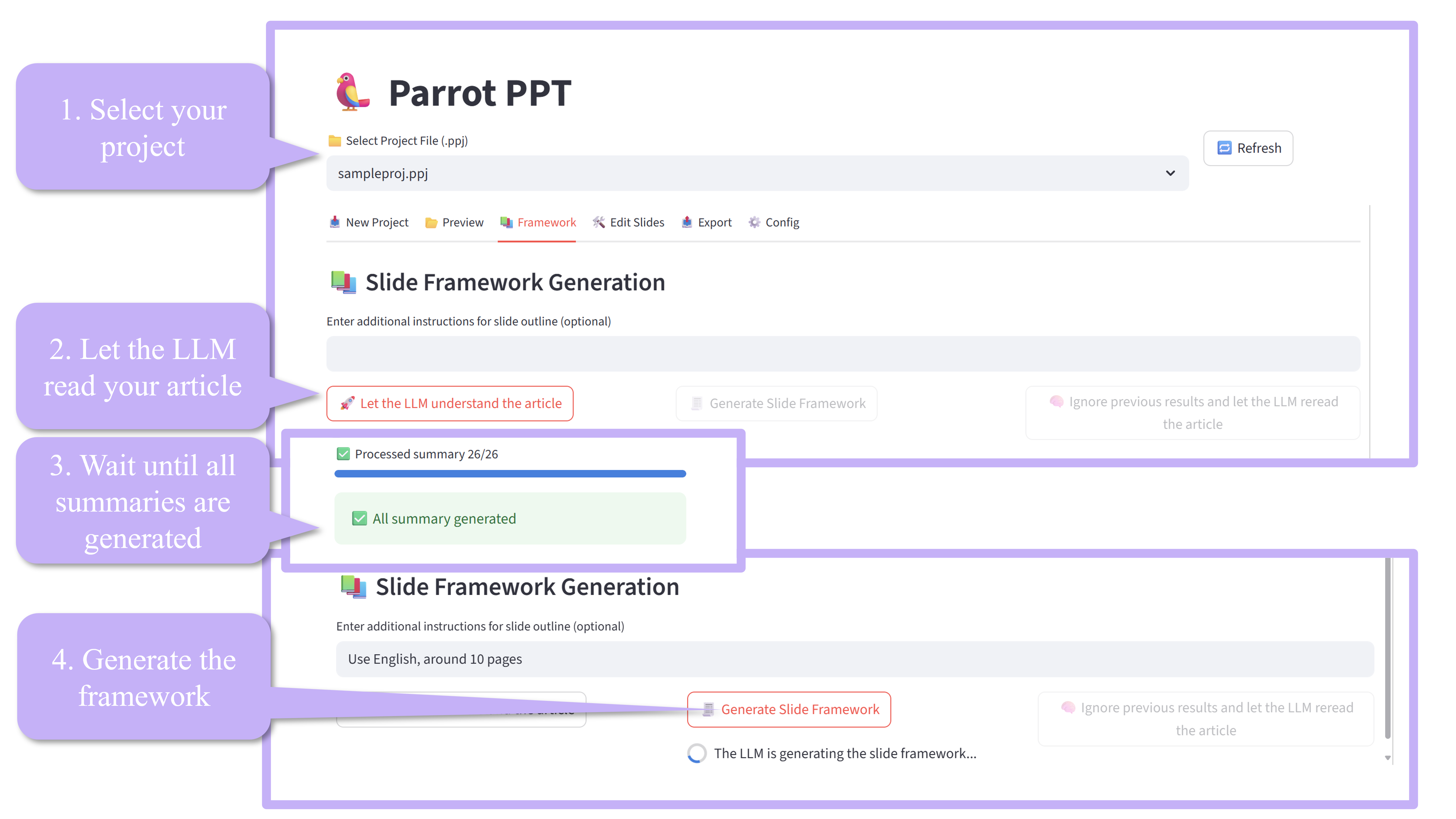
Edit Content
Go to the Edit tab and click "Reset: Apply Generated Framework". This brings your draft slides into the editing area.
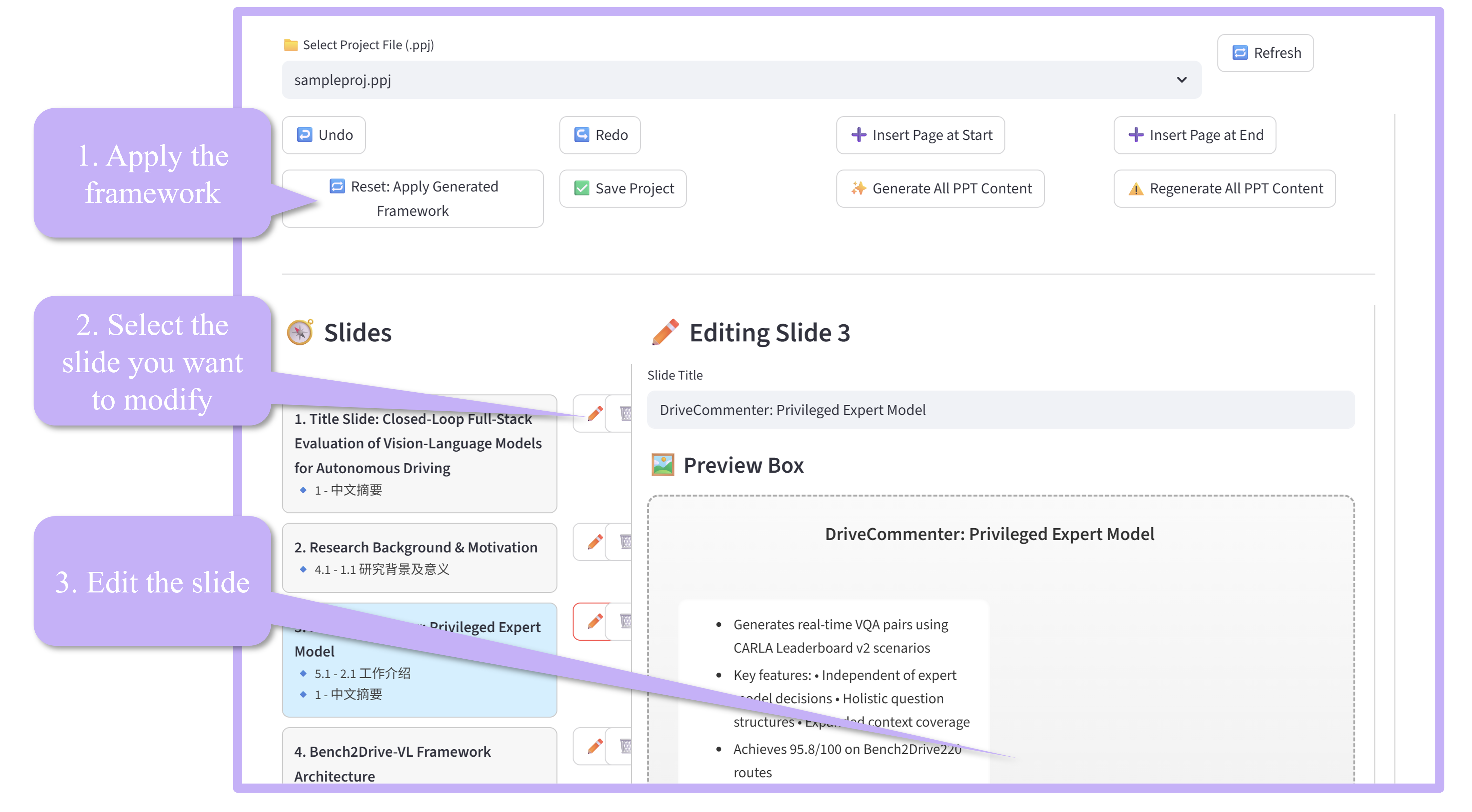
Each slide is mapped to specific paragraphs in your source file. You can change which segments are attached to which slide, choose to include images from those segments, or regenerate the slide content using the LLM—all until you're happy with the result.
Export
Choose a PowerPoint template (stored under templates/). You can open and inspect them, and even create your own templates following the same format. Click Export to download the final file.
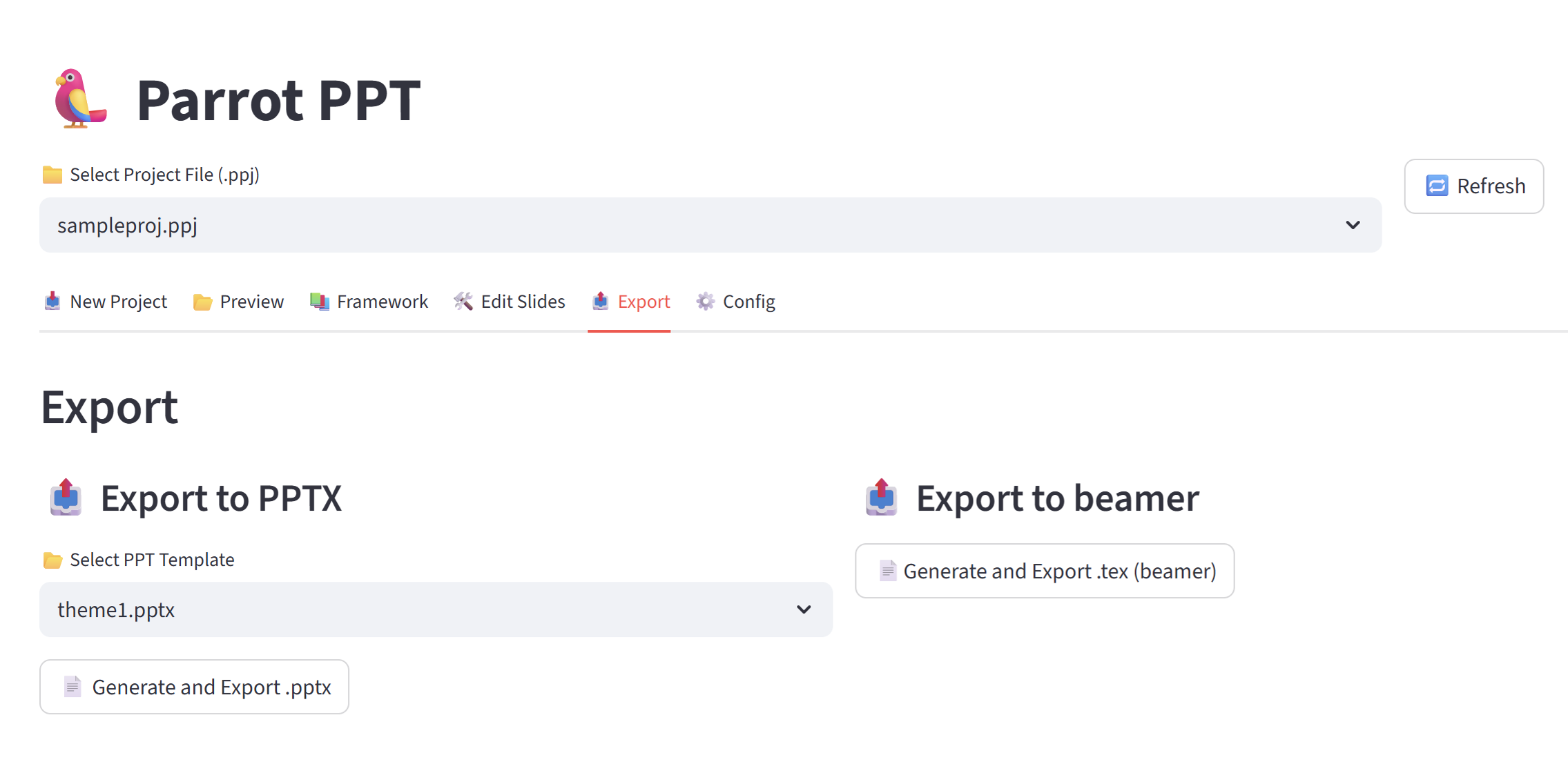
ParrotPPT also supports exporting Beamer LaTeX source code, though this feature is experimental and still under development.